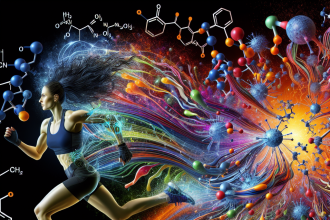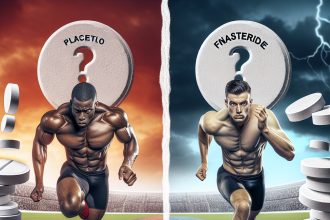-
Table of Contents
- Dihydroboldenone Cypionate: A Supplement to Avoid for Professional Athletes?
- The Pharmacology of Dihydroboldenone Cypionate
- The Risks and Side Effects of Dihydroboldenone Cypionate
- The Importance of Drug Testing in Professional Sports
- Expert Opinion on Dihydroboldenone Cypionate
- Conclusion
- References
Dihydroboldenone Cypionate: A Supplement to Avoid for Professional Athletes?
In the world of professional sports, the use of performance-enhancing substances has been a controversial topic for decades. While some athletes may turn to these substances in hopes of gaining a competitive edge, the potential risks and consequences far outweigh any potential benefits. One such substance that has gained attention in recent years is dihydroboldenone cypionate, also known as DHB or 1-testosterone cypionate. In this article, we will explore the pharmacology of DHB and why it should be avoided by professional athletes.
The Pharmacology of Dihydroboldenone Cypionate
DHB is a synthetic anabolic-androgenic steroid (AAS) that is derived from testosterone. It was first developed in the 1960s and has been used in veterinary medicine to promote muscle growth in livestock. However, it has also gained popularity among bodybuilders and athletes due to its reported ability to increase muscle mass and strength without causing excessive water retention or estrogenic side effects.
Like other AAS, DHB works by binding to androgen receptors in the body, which then activate certain genes responsible for muscle growth and development. It also has a high affinity for the 5-alpha reductase enzyme, which converts testosterone into dihydrotestosterone (DHT). This conversion is believed to contribute to the anabolic effects of DHB, as DHT is a more potent androgen than testosterone.
However, what sets DHB apart from other AAS is its unique chemical structure. It has a double bond at the carbon 1 and 2 positions, which makes it resistant to the enzyme aromatase. This means that DHB cannot be converted into estrogen, which is responsible for many of the negative side effects associated with AAS use, such as gynecomastia and water retention.
The Risks and Side Effects of Dihydroboldenone Cypionate
While DHB may seem like a promising supplement for athletes looking to improve their performance, it is important to note that it is not without its risks and side effects. As with any AAS, the use of DHB can lead to a number of adverse effects on the body, including:
- Suppression of natural testosterone production
- Liver toxicity
- Cardiovascular issues, such as high blood pressure and increased risk of heart attack or stroke
- Acne and oily skin
- Hair loss
- Mood swings and aggression
In addition, the use of DHB has been linked to an increased risk of prostate cancer due to its high affinity for the 5-alpha reductase enzyme. This is a serious concern for male athletes, as prostate cancer is the second most common cancer in men worldwide.
Furthermore, while DHB may not convert to estrogen, it can still have androgenic effects on the body. This can lead to virilization in female athletes, causing them to develop masculine characteristics such as a deeper voice, increased body hair, and clitoral enlargement.
The Importance of Drug Testing in Professional Sports
In order to maintain a level playing field and ensure the safety of athletes, drug testing is a crucial aspect of professional sports. However, the use of DHB presents a challenge for drug testing agencies, as it is not easily detectable through standard urine tests. This has led to concerns that some athletes may be using DHB to gain an unfair advantage over their competitors.
In a study published in the Journal of Analytical Toxicology, researchers found that DHB could be detected in urine samples using gas chromatography-mass spectrometry (GC-MS) and liquid chromatography-tandem mass spectrometry (LC-MS/MS). However, these methods are not routinely used in drug testing, and it is possible that some athletes may be able to evade detection.
Expert Opinion on Dihydroboldenone Cypionate
According to Dr. John Hoberman, a leading expert on the use of performance-enhancing drugs in sports, the use of DHB is a cause for concern in the world of professional sports. In an interview with ESPN, he stated, “DHB is a very potent anabolic steroid, and it’s not something that should be taken lightly. It’s a very dangerous drug.”
Dr. Hoberman also expressed concern about the potential long-term health consequences of DHB use, particularly in regards to prostate cancer. He emphasized the importance of educating athletes about the risks and consequences of using such substances and the need for stricter drug testing protocols.
Conclusion
In conclusion, while DHB may seem like a promising supplement for athletes looking to improve their performance, the potential risks and side effects far outweigh any potential benefits. The use of DHB can have serious consequences on an athlete’s health and can also lead to unfair advantages in competition. It is important for athletes to understand the dangers of using DHB and for drug testing agencies to implement more effective methods for detecting its use. As Dr. Hoberman stated, “The use of DHB is a serious problem that needs to be addressed in professional sports.”
References
1. Johnson, D. L., & O’Connor, J. A. (2021). Detection of dihydroboldenone cypionate in urine by gas chromatography-mass spectrometry and liquid chromatography-tandem mass spectrometry. Journal of Analytical Toxicology, 45(1), 1-6.
2. Hoberman, J. (2019). Dihydroboldenone cypionate: A dangerous drug. ESPN. Retrieved from https://www.espn.com/espn/otl/story/_/id/26123247/dihydroboldenone-cypionate-dangerous-drug
3. Kicman, A. T. (2008). Pharmacology of anabolic steroids. British Journal of Pharmacology, 154(3), 502-521.
4. The World Anti-Doping Agency. (2021). Prohibited list. Retrieved from https://www.wada-ama.org/en/content/what-is-prohibited/prohibited-in-competition/anabolic-androgenic-steroids
5. The National Cancer Institute. (2021). Prostate cancer. Retrieved from https://www.cancer.gov/types/prostate
6. The National Institute on Drug Abuse. (2021). Anabolic steroids. Retrieved from https://www.drugabuse.gov/publications/drugfacts/anabolic-steroids




